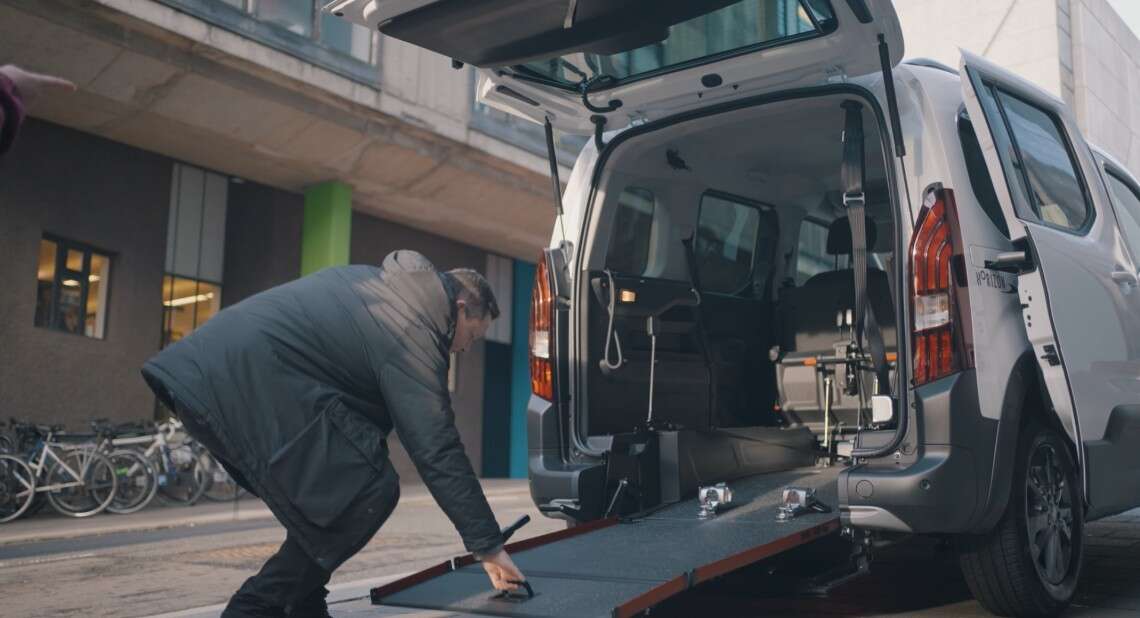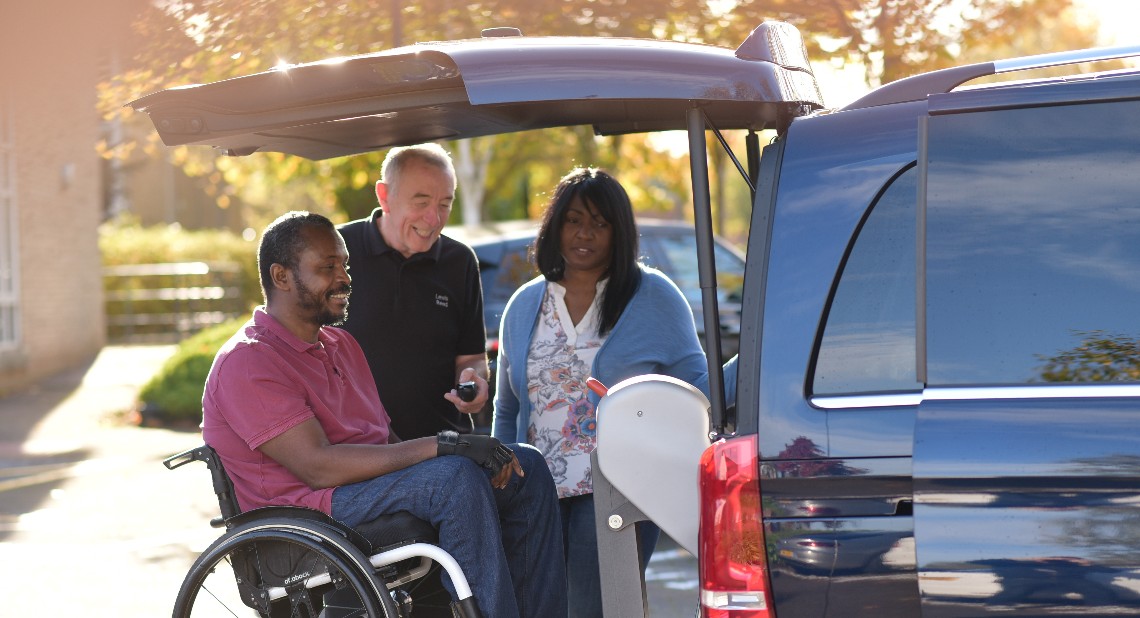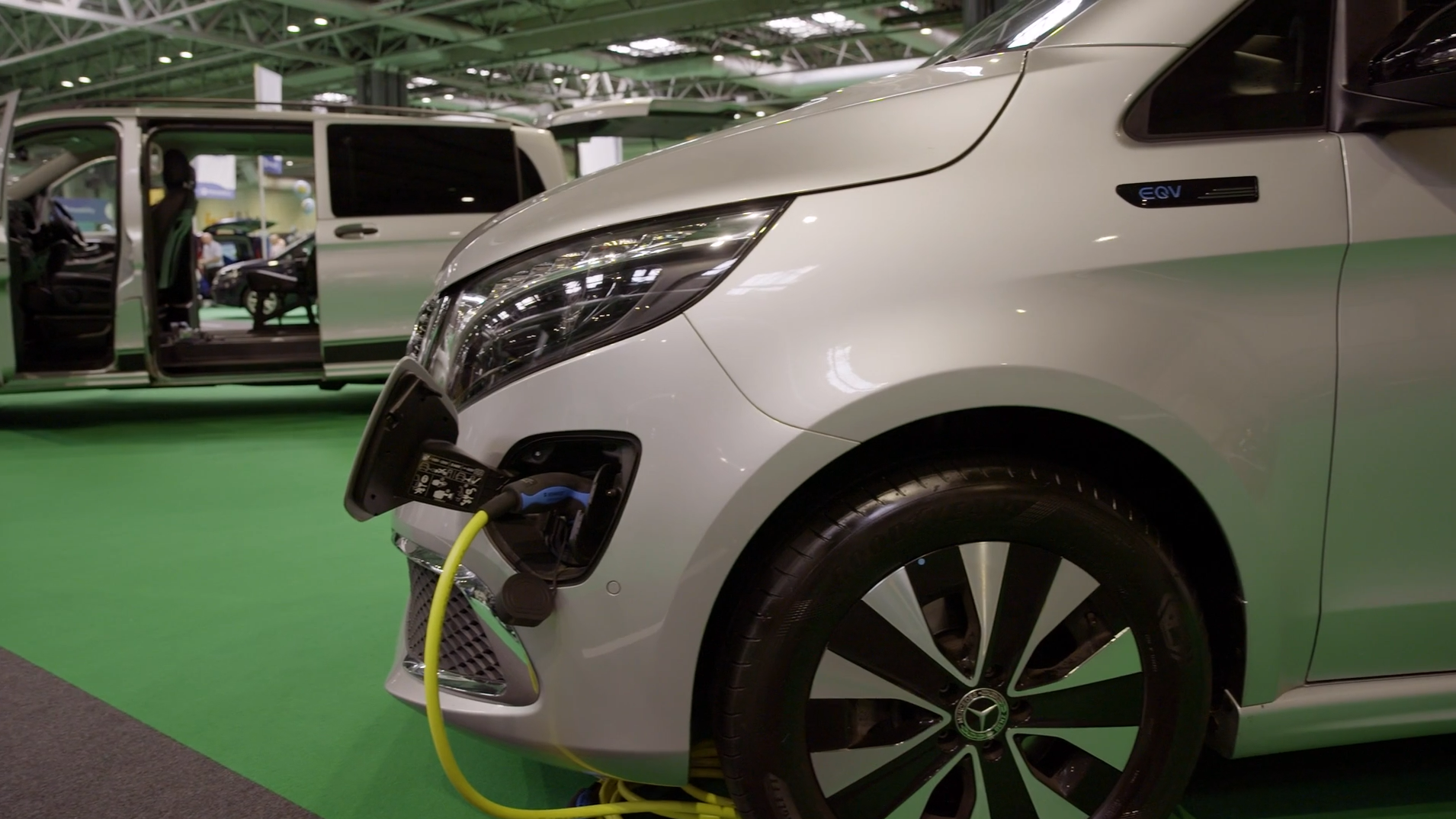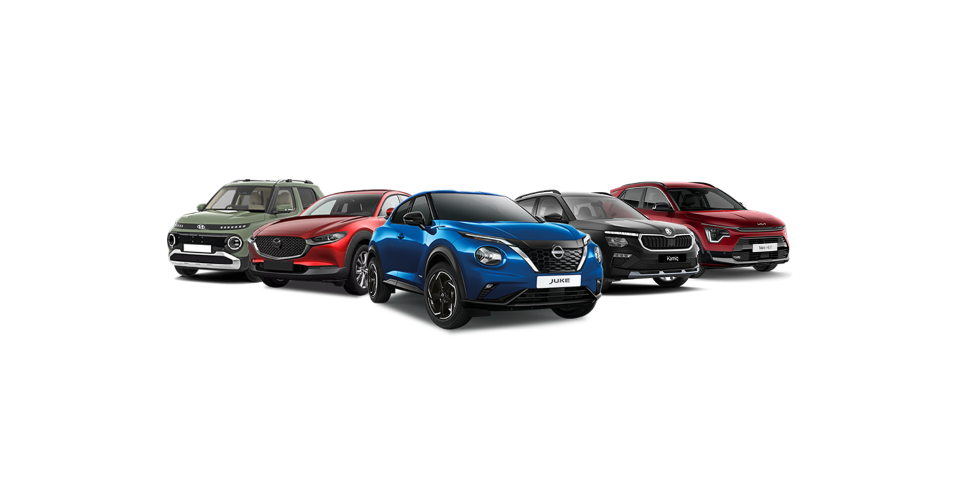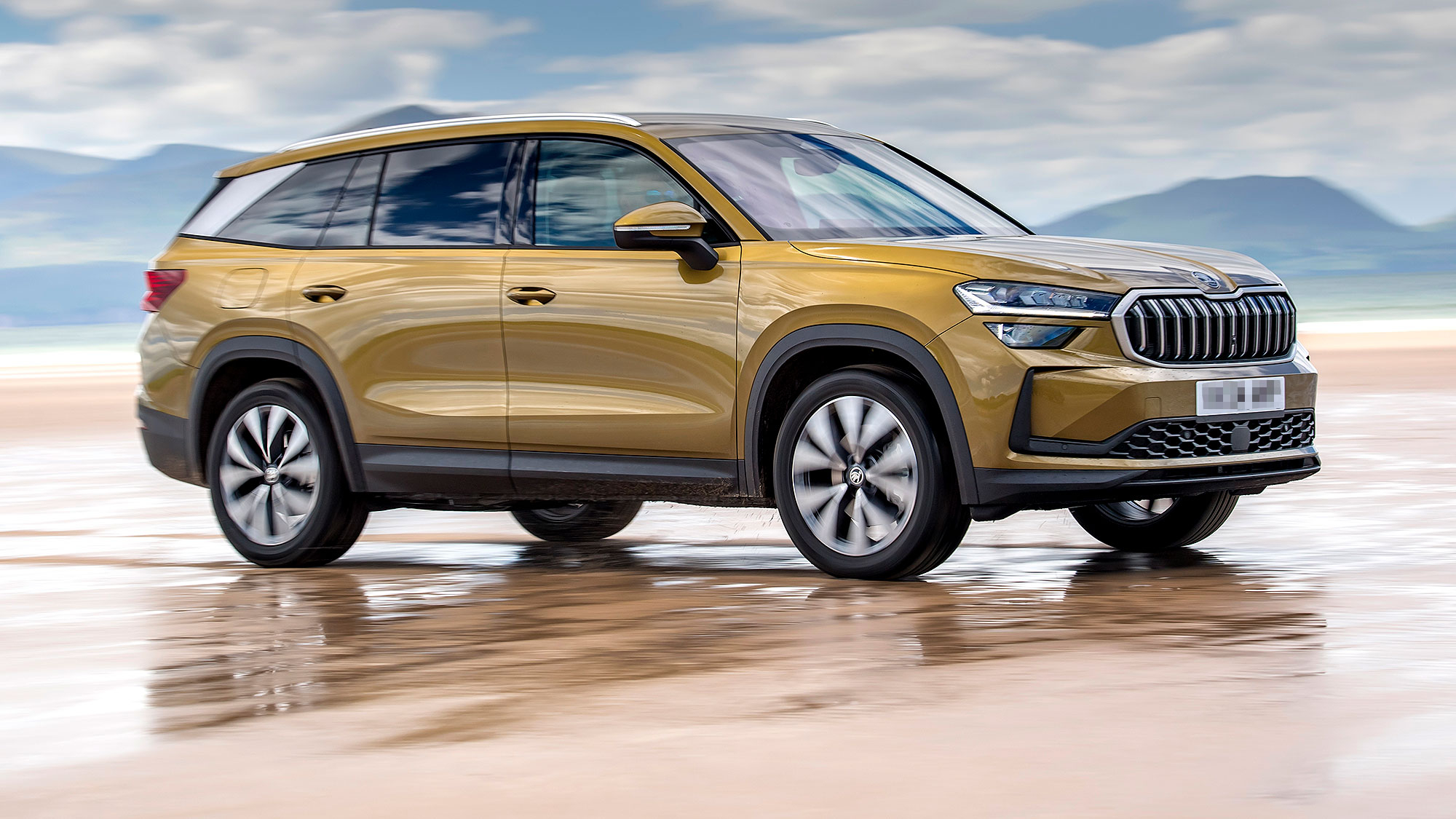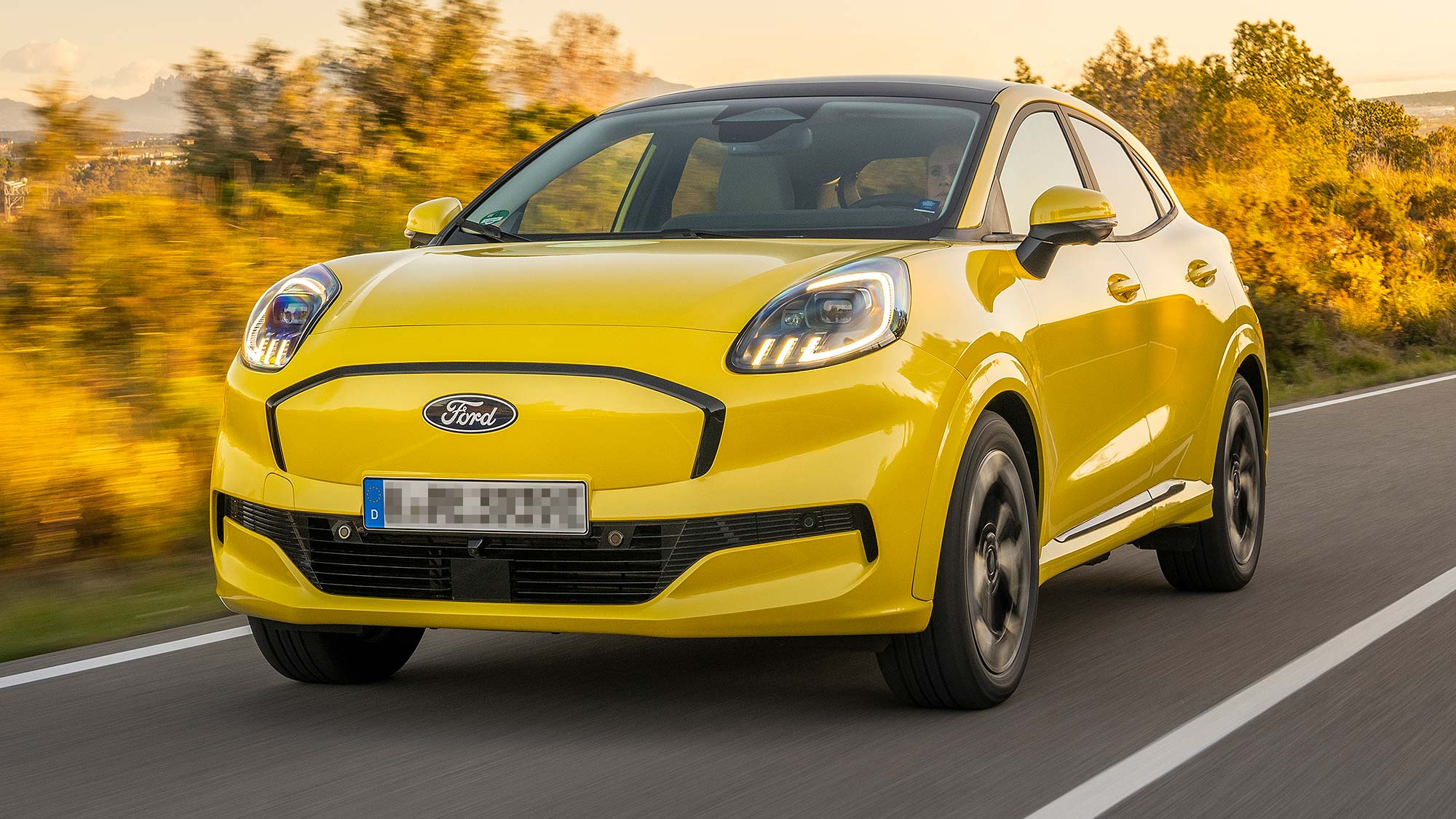You may have heard that the Government is banning the sale of all new petrol and diesel cars by 2030, as part of the move towards a fully electric future. But what does this mean for people who drive in Wheelchair Accessible Vehicles (WAVs)?
In this article, we discuss a new partnership between Motability Operations and CALLUM, a design and engineering business, that could help us find an innovative solution to make electric vehicles accessible to all.
We’ve partnered with CALLUM to support the development of small and medium electric WAVs. Unlike standard electric cars, eWAVs have some unique engineering challenges that need to be tackled, because of the way the vehicles are converted. This project gives two talented students from Coventry University and The Glasgow School of Art a chance to take on a placement at CALLUM and tackle some of these engineering issues, and help to build an eWAV prototype to be shared with the wider motoring industry.
Why can it be challenging to build an electric WAV?
One of the biggest difficulties with converting an eWAV is the fact that most electric vehicles store their batteries in the floor of the vehicle. When a standard vehicle is converted into a WAV, the supplier usually needs to lower the floor to ensure that passengers have enough headroom when seated in their wheelchair. This makes converting an electric vehicle challenging, as the floor can’t be lowered as it usually would be.
What does the partnership with CALLUM involve?
Students from Coventry University and Glasgow School of Art submitted their eWAV design concepts at a ‘Design Hack’. The students whose designs were selected will be working with the design and engineering teams at CALLUM from next month, to develop an eWAV prototype that will be revealed in late Autumn 2023.
The students who have been selected are Zoe Graham, a fourth-year Bachelor of Engineering student of Product Design at Glasgow School of Art, and Yikuan Zhang, a third-year Bachelor of Arts student studying Automotive and Transportation Design at Coventry University.
Watch our video below to find out more:
Why are we supporting this initiative?
It’s vital that our customers aren’t left out in the transition to electric vehicles. Our hope is that this project will help create a working prototype of an electric WAV that is suitable for disabled drivers and passengers.
Andrew Miller, our CEO, said:
“WAVs provide freedom and independence for lots of our Motability Scheme customers every day. Solving this problem is vital, so we can support our WAV drivers when they switch to an electric vehicle in the future.”
What else is being done to make electric vehicles more accessible?
This partnership is one aspect of the wider plan to make EVs more accessible for all. Last year we shared that Motability, the Charity, have worked with the UK Government Office for Zero Emission Vehicles (OZEV) to sponsor a new accessibility standard for public EV chargepoints, developed by the British Standards Institute (BSI).
For Scheme customers who do decide to get an eWAV, there is also charging support included within your lease. If you choose to lease your first eWAV on the Scheme, you can get a standard home chargepoint installation provided at no extra cost, so long as you have suitable off-street parking. Plus, there is more research being done into how we can support WAV customers with the transition to electric over the coming years.
Related articles
Watch our video on how electric WAVs are converted
Top tips for caring for your car or Wheelchair Accessible Vehicle’s battery
![]()
